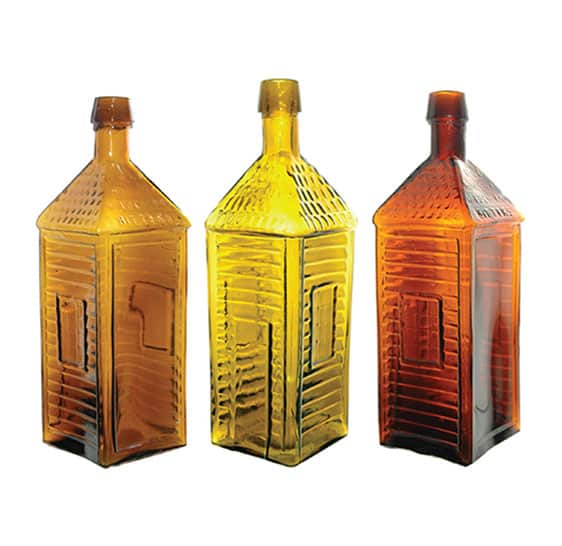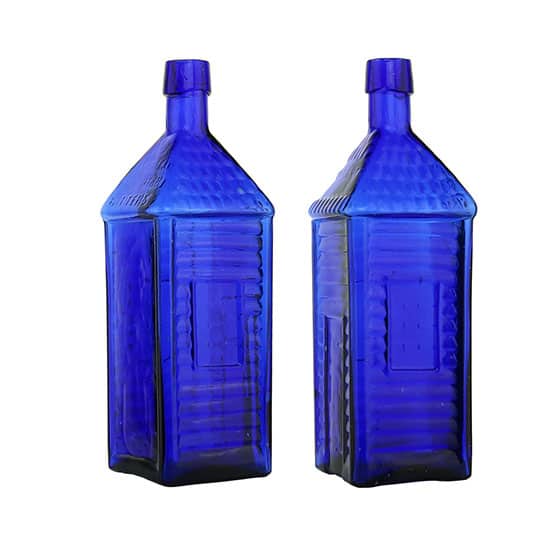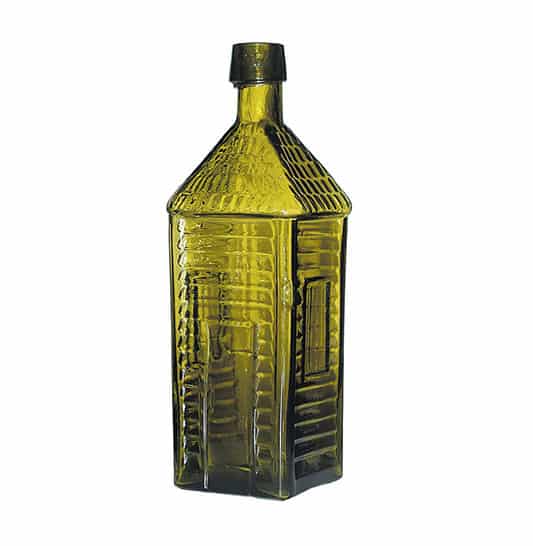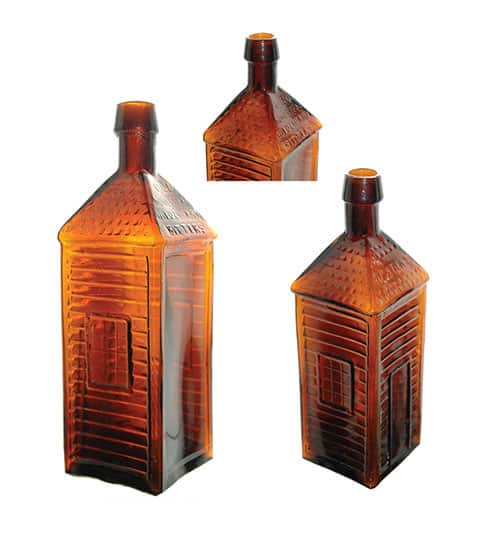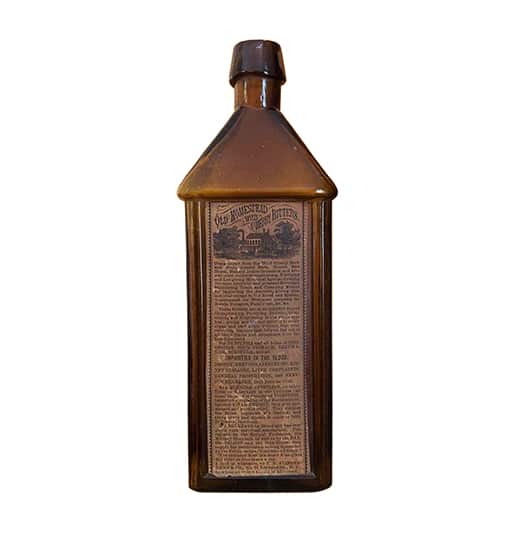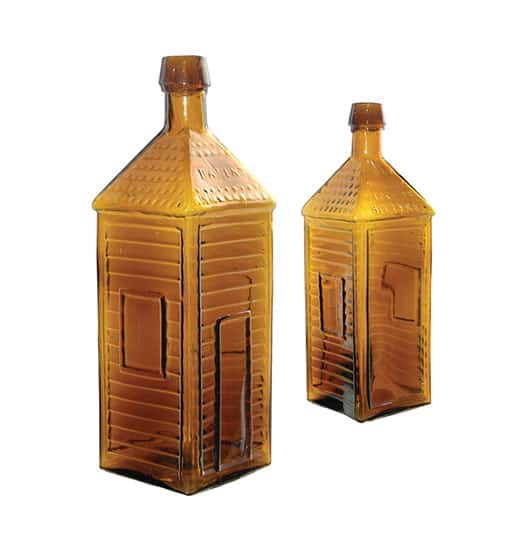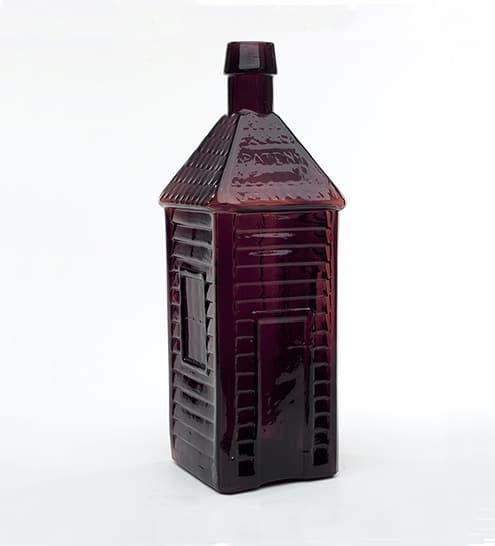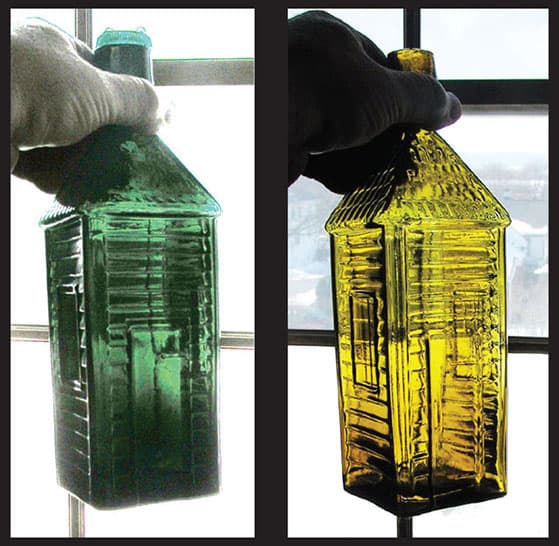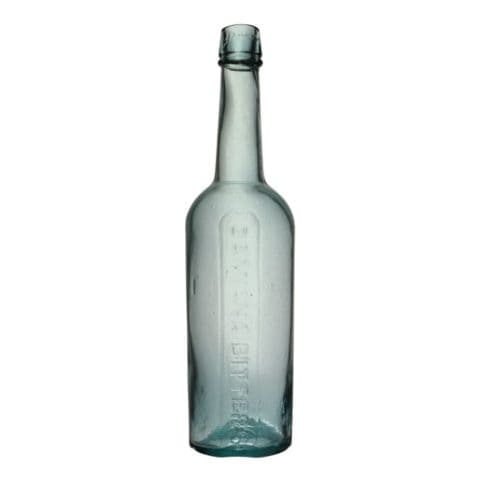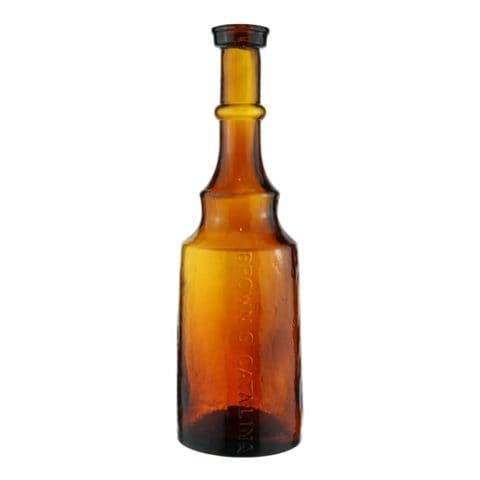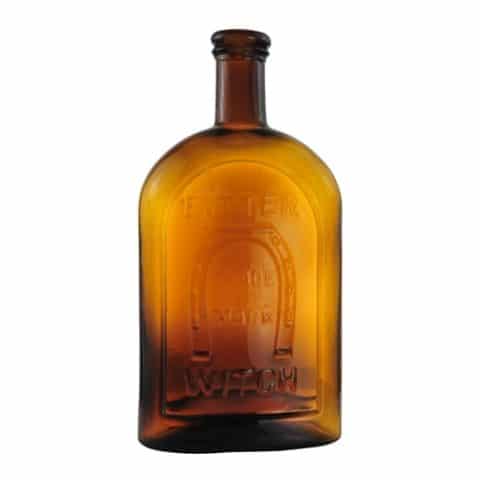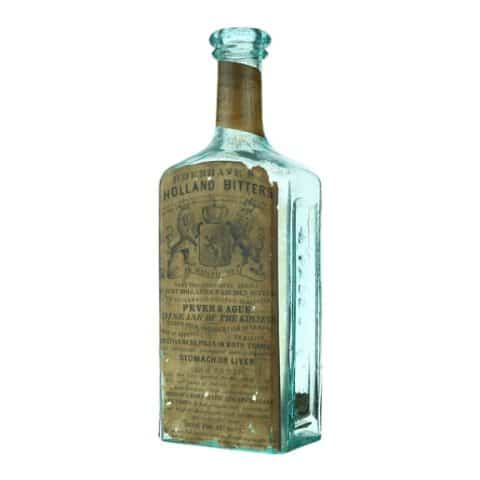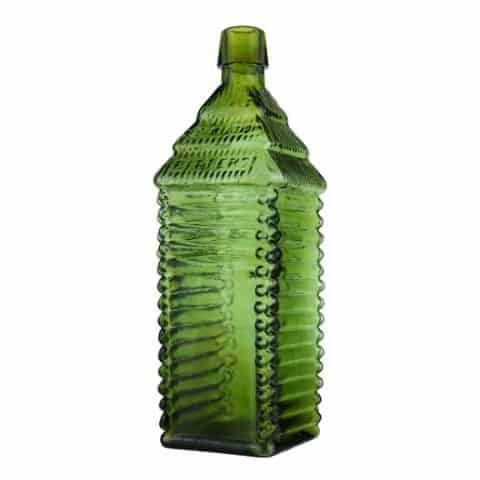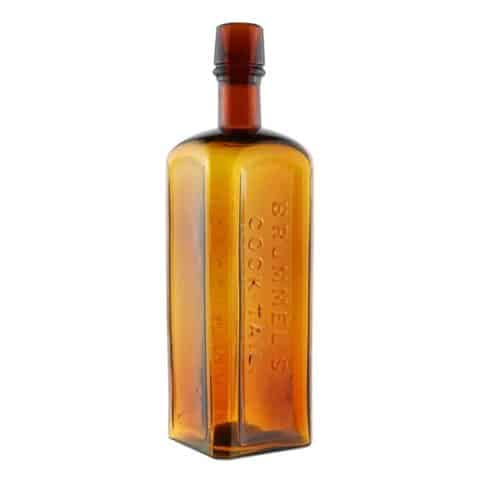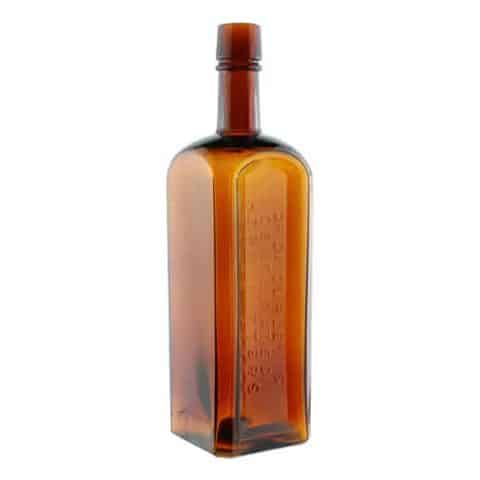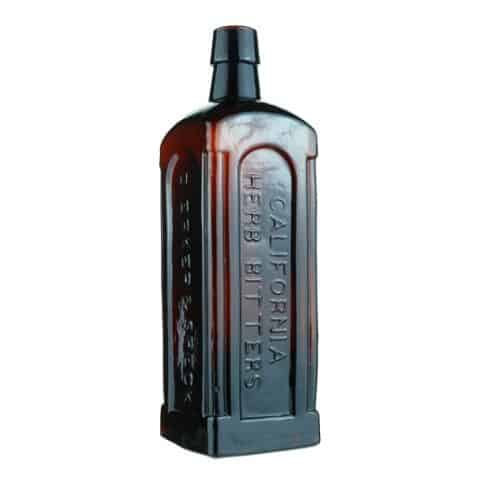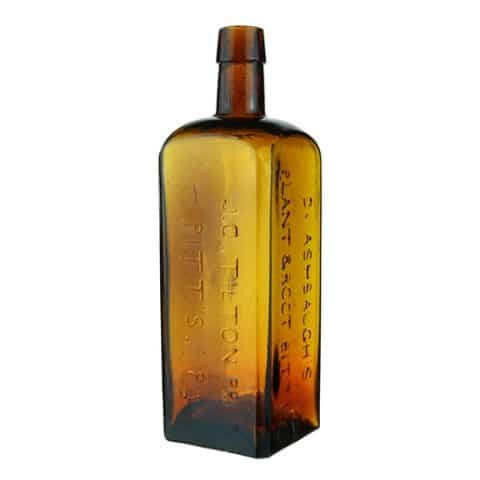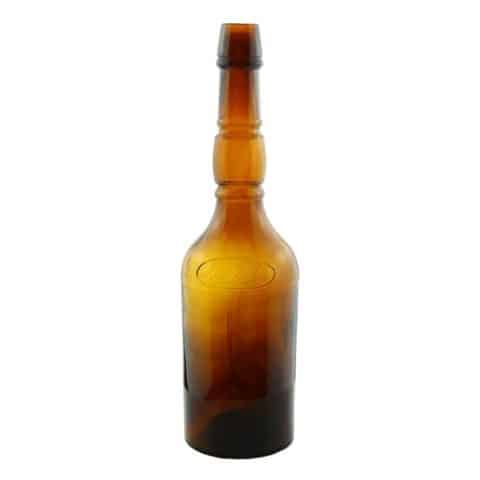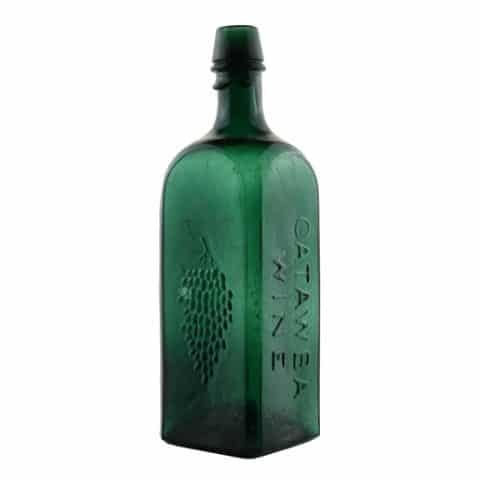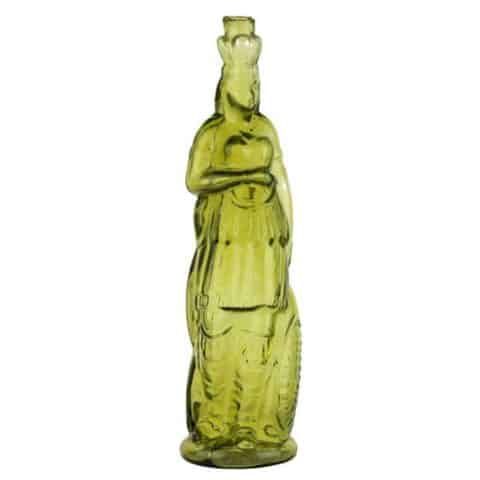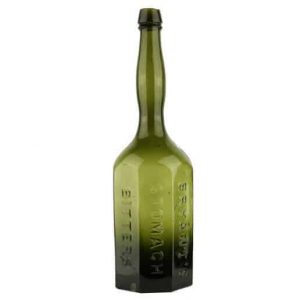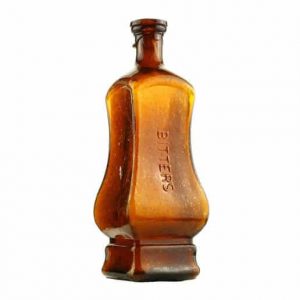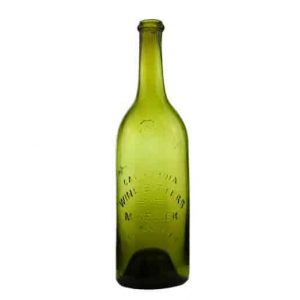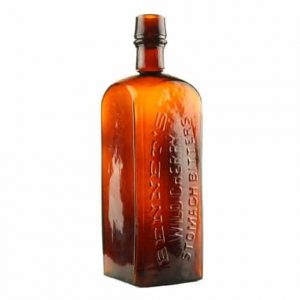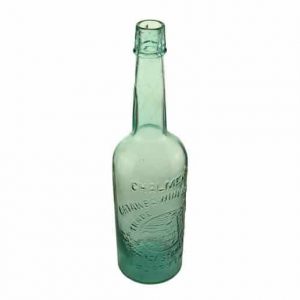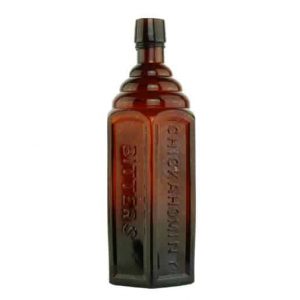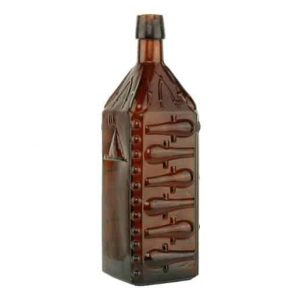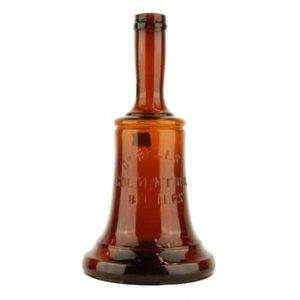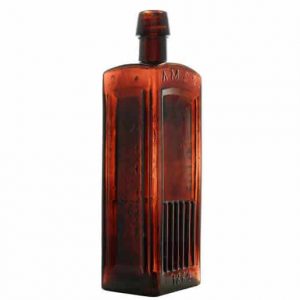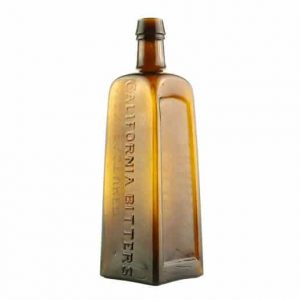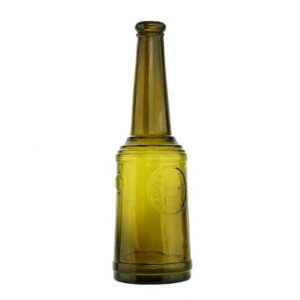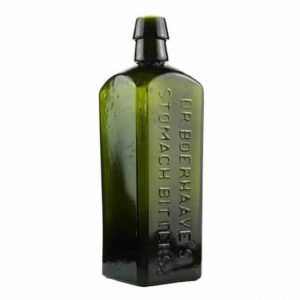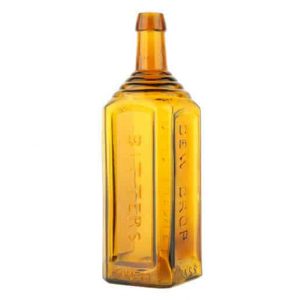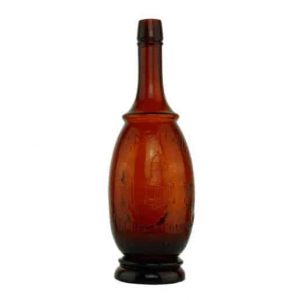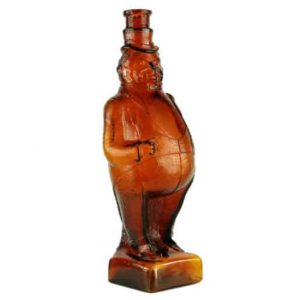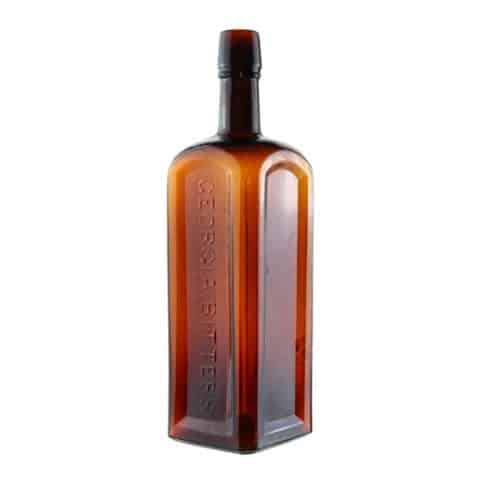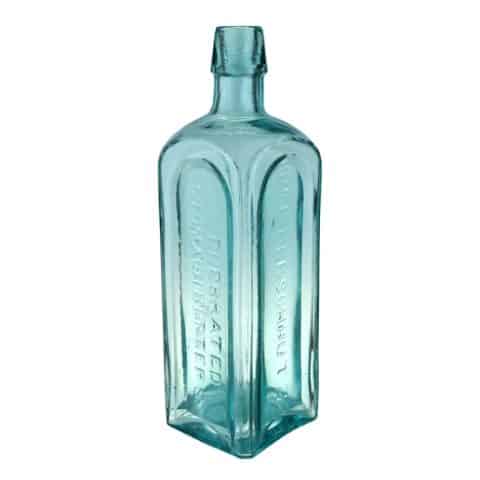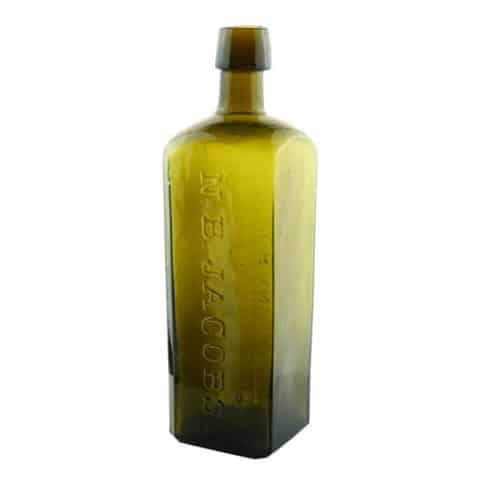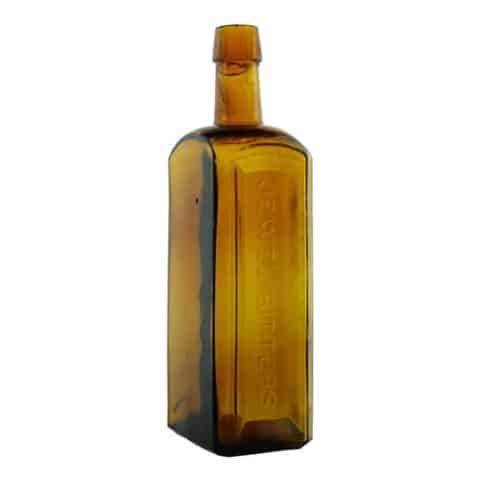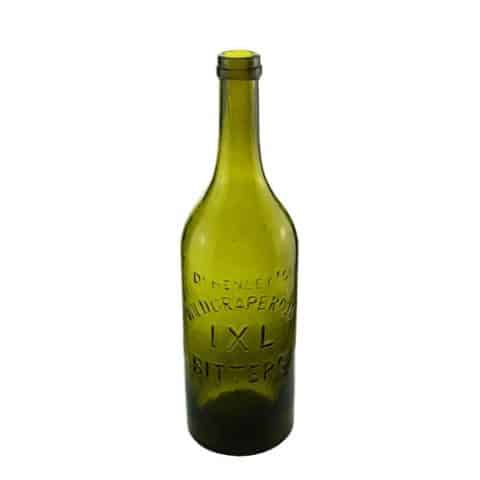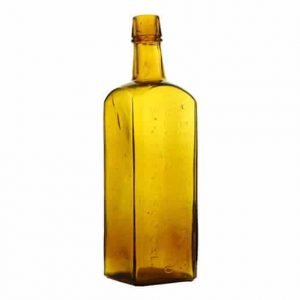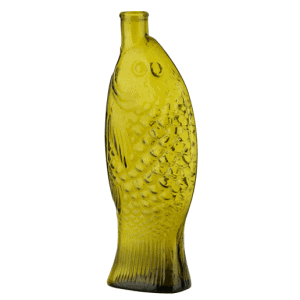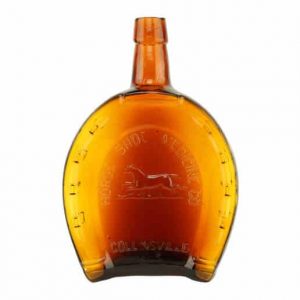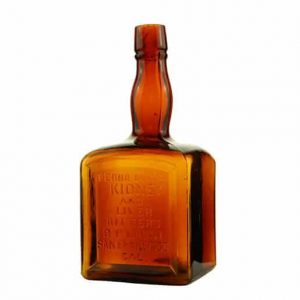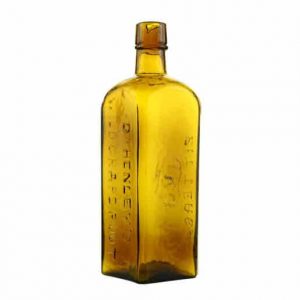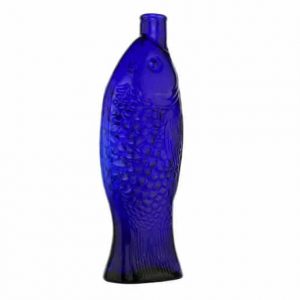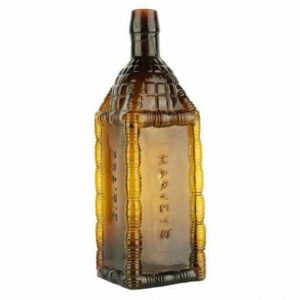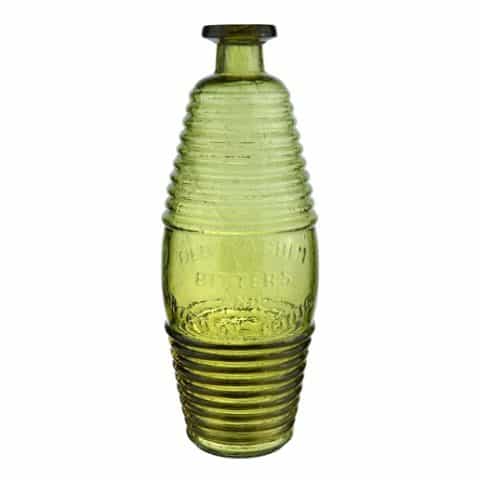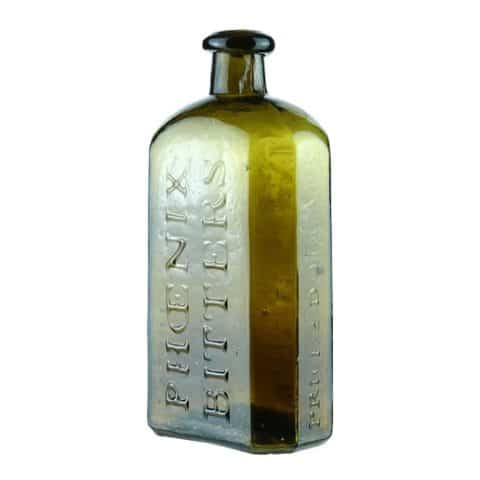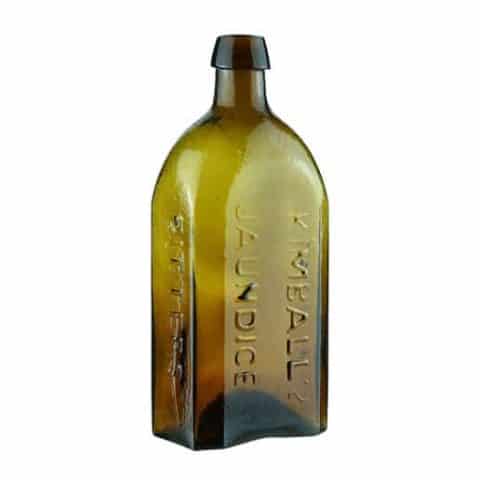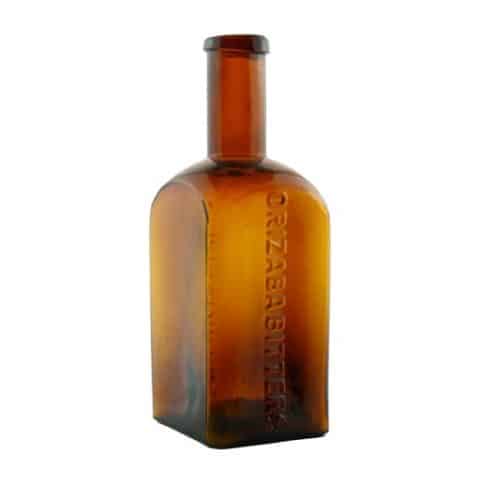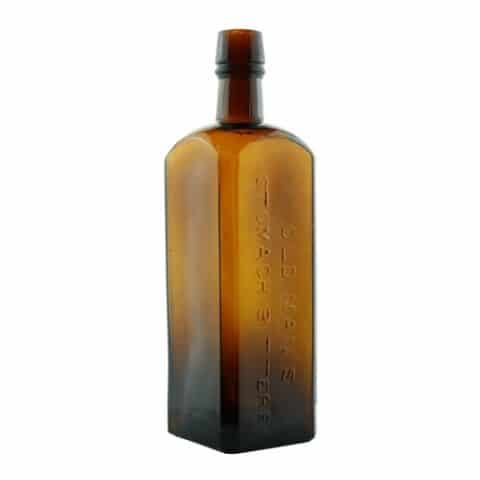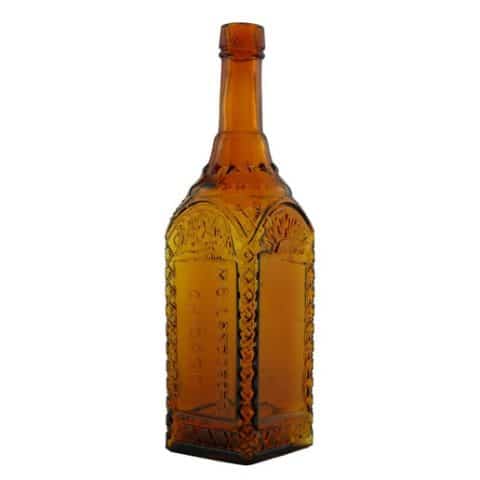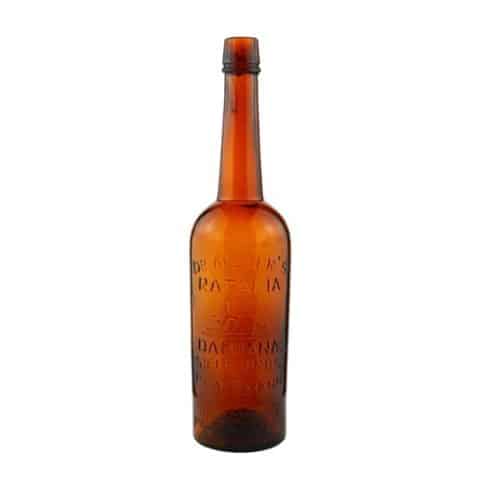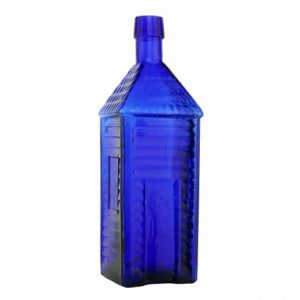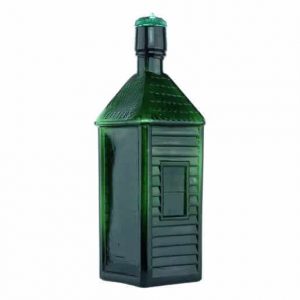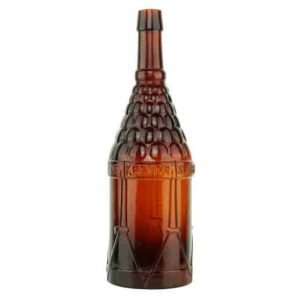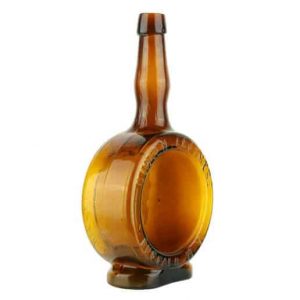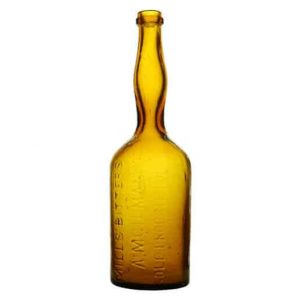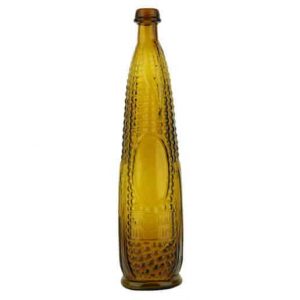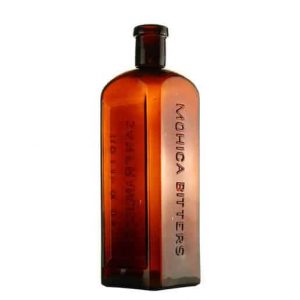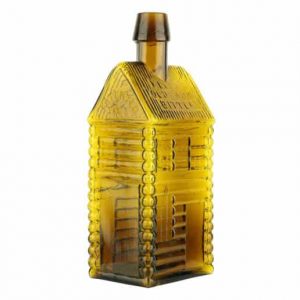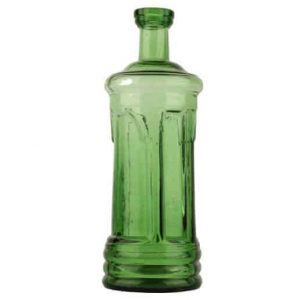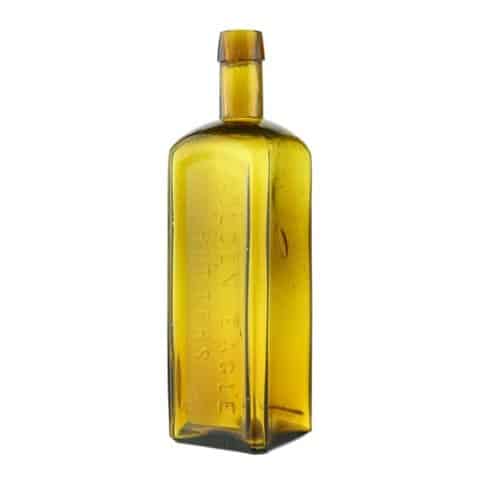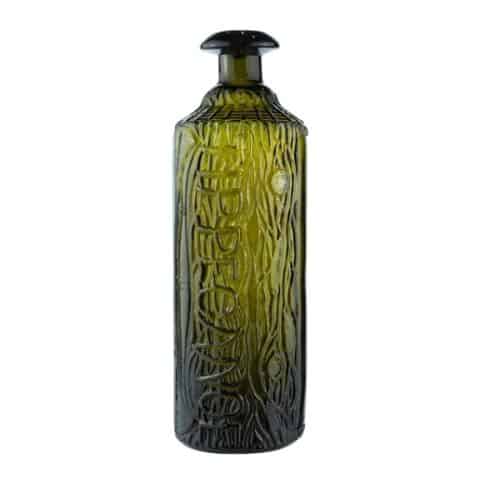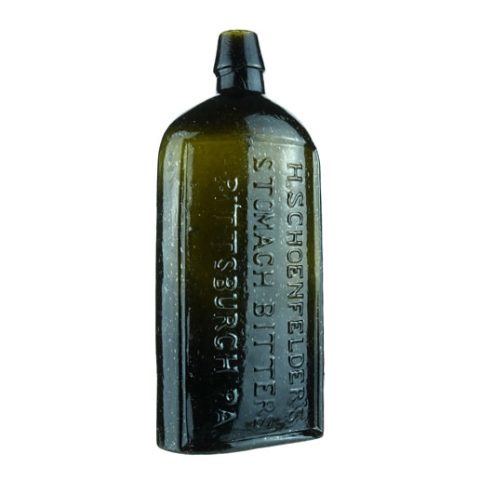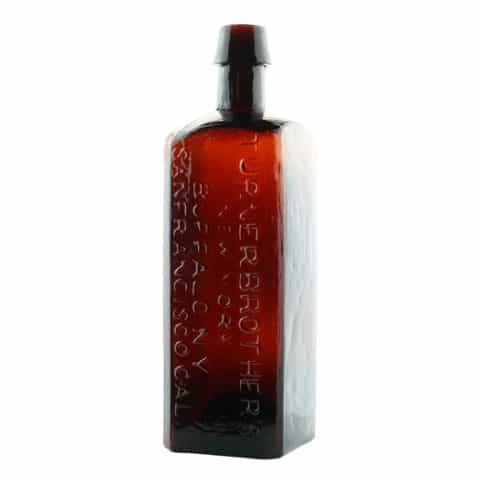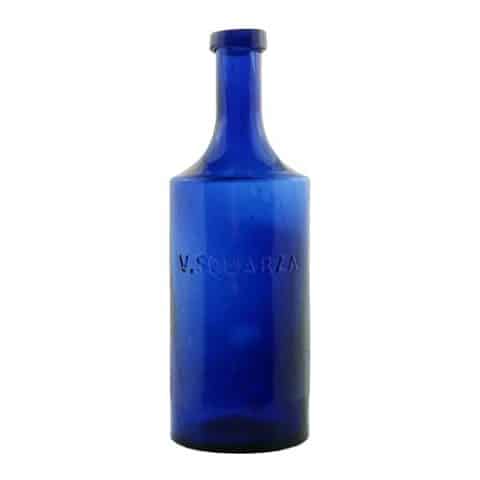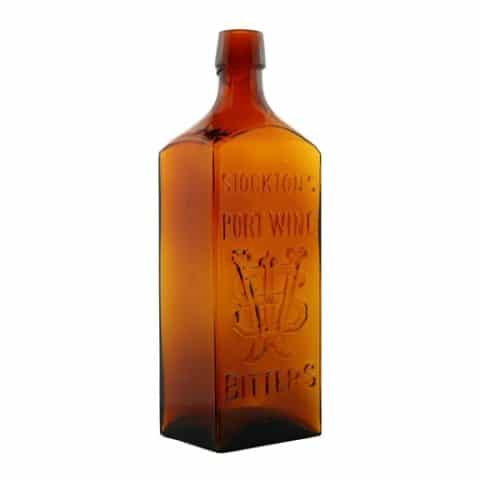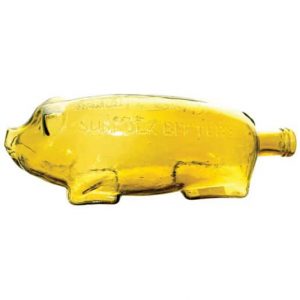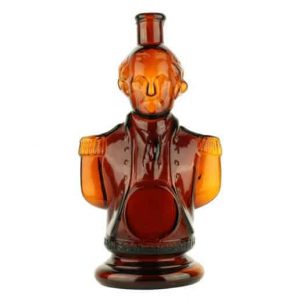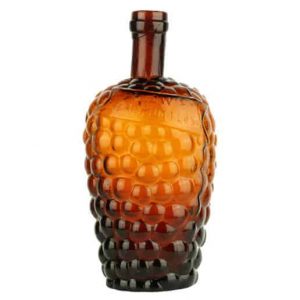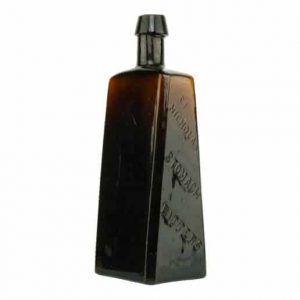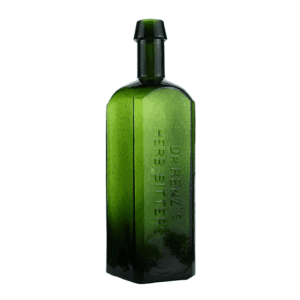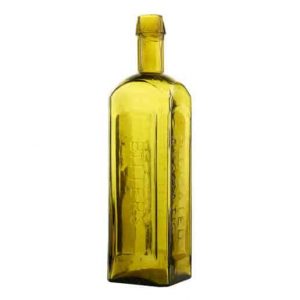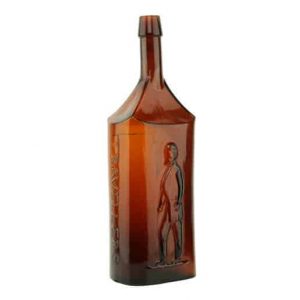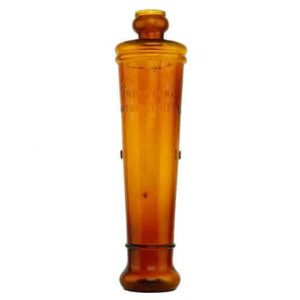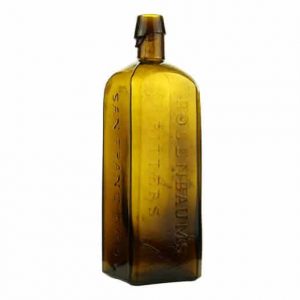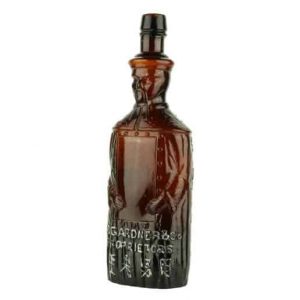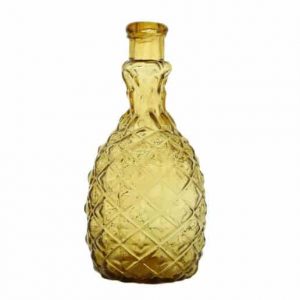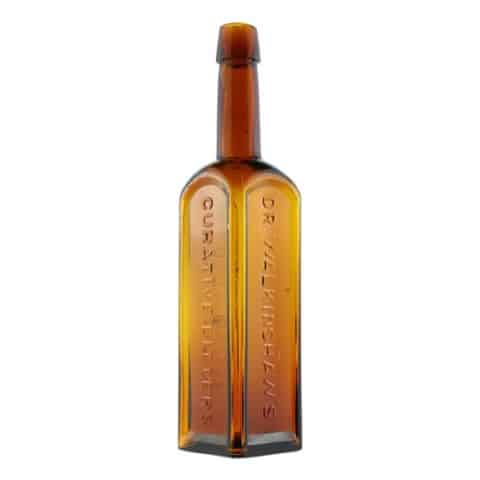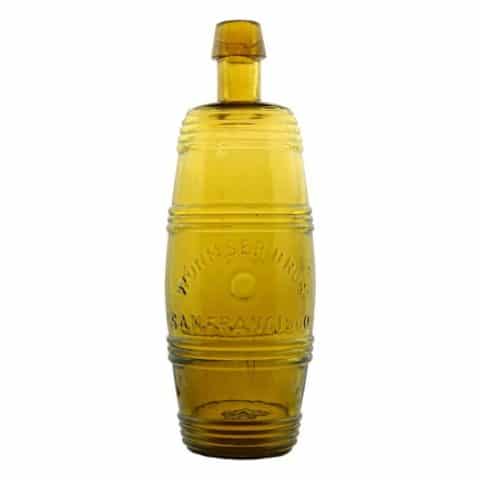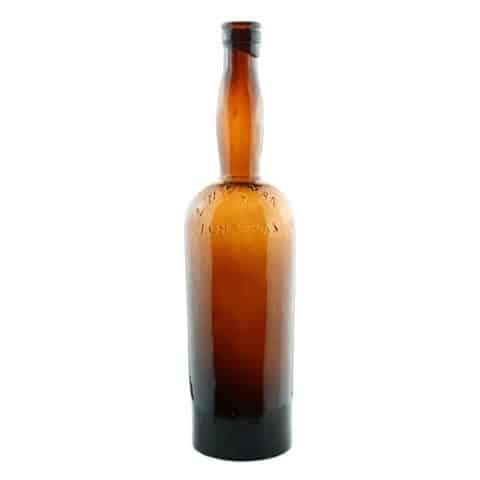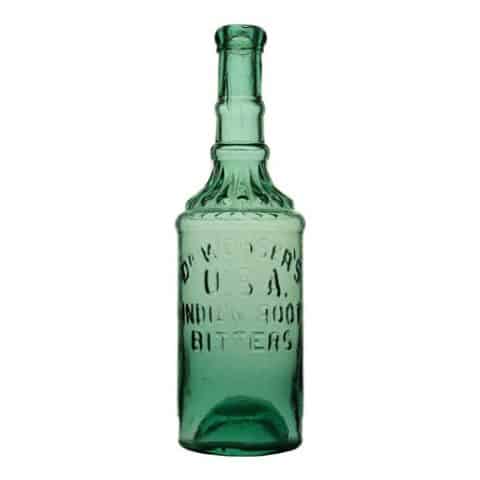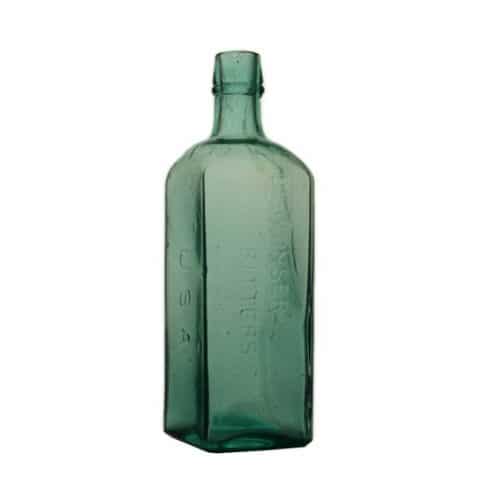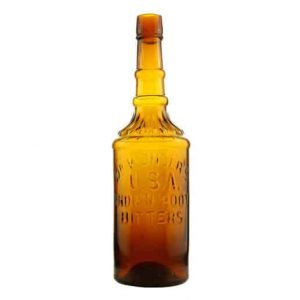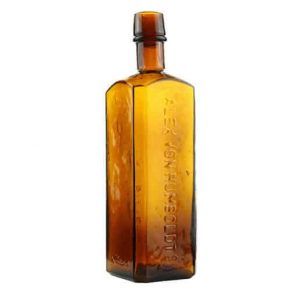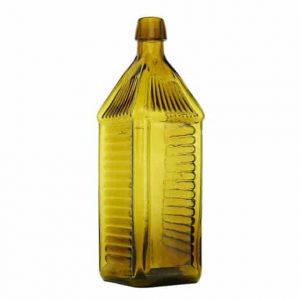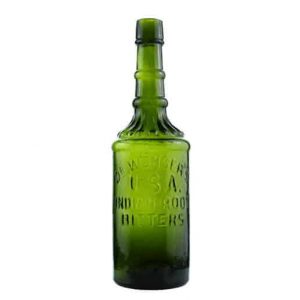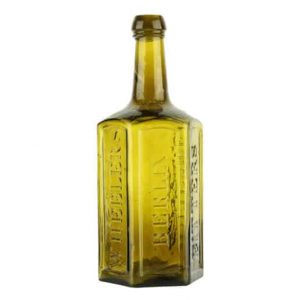Old Homestead Wild Cherry Bitters – Green
Old Homestead Wild Cherry Bitters
Patent
O 37
T. B. Slingerland & Co., New York, N.Y.
Emerald Green Figural Cabin
Provenance: Sandor P. Fuss Collection
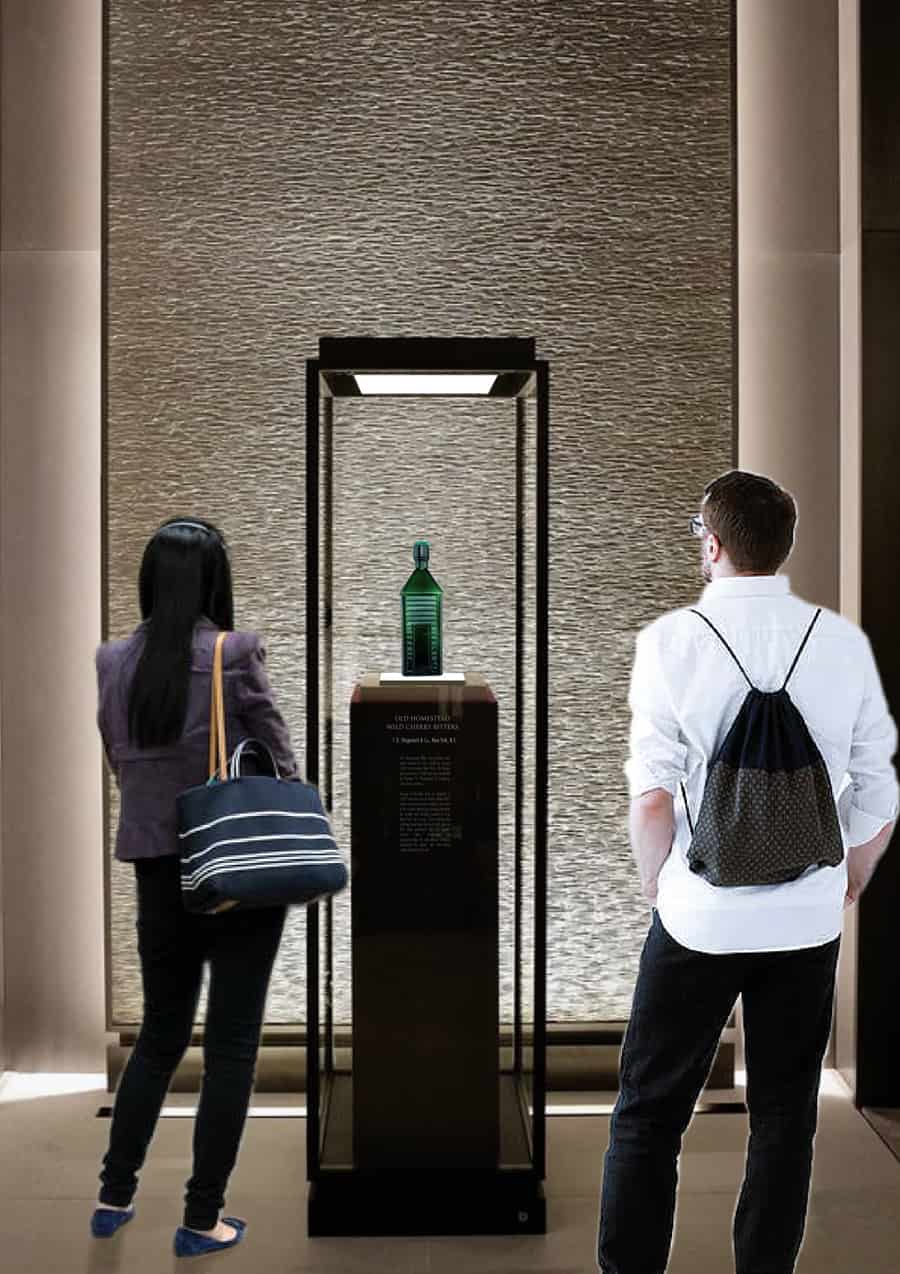
We are pleased to have on display two unique Old Homestead Wild Cherry Bitters figural cabins. This would be the emerald green glass example and the cobalt blue Old Homestead Wild Cherry Bitters.
Old Homestead Wild Cherry Bitters bottles can be found in a stunning array of glass colors such as all shades of amber and yellow, lime, puce, green, and cobalt blue.
Our square green glass figural cabin bottle has a framed 12-pane window on two opposite sides with a center panel door with a latch and hinges. The fourth panel is blank and reserved for a paper label. Stacking, horizontal slats fill in the areas around the windows and door. There is a shingled roof with four pitches with embossed copy reading ‘OLD HOMESTEAD WILD CHERRY BITTERS’ on one pitch over the door side and ‘PATENT’ on the opposite pitch. Typically the mouth is a long tapered collar and the base is smooth. Our green example has a long tapered collar and ring for the applied mouth. There is a threaded glass stopper which is unique for this bottle.
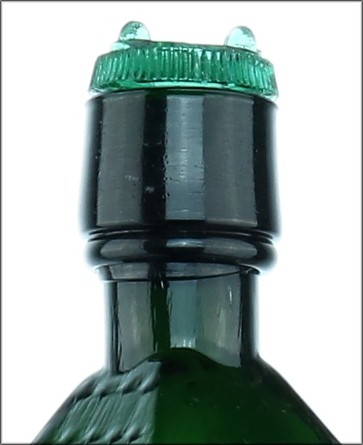
There are a number of variants of this bottle when looking at the window panes, roof shingles, and with the door ending above the base and the door going to the bottom of the bottle.
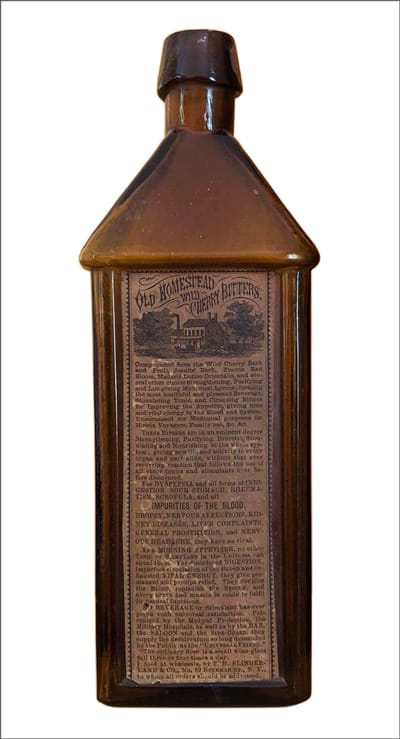
Old Homestead Wild Cherry Bitters was trade marked in June 1863 by George Scott from Rome, New York. His design was patented in 1864 and was marketed by Thomas B. Slingerland & Company. They were partners.
George Scott was born in England in 1827 and was one of Rome, New York’s oldest and best-known residents. He came to the United States as a young child with his family and initially resided in Troy, New York. As a teen, Scott learned the printing trade from Horace N. Bill, who at that time published the Old Roman Citizen. After completing his apprenticeship, he and Alfred Sandford purchased the paper, their firm being called Sandford & Scott.
George Scott later disposed of his interest in the paper and entered the drug business on Dominick Street in Troy, eventually becoming the sole owner of a drug store. After a few years, Scott disposed of this business and moved to New York City and opened up a drug store on Beekman Street.
While in New York, Scott perfected the formula for Old Homestead Wild Cherry Bitters, and returning to Rome, began its manufacture and sale on an extensive scale, partnering with Thomas Butler Slingerland. Their headquarters in Troy was on South James Street opposite Stanwix Hall. Slingerland was primarily a tobacco and cigar dealer. He sold the bitters at No. 69 Beekman Street in New York City.
The following notice was promptly posted in Pittsburgh, “A $200,000 Contract. The enterprising firm of our Glass Works a few days ago contracted to furnish T. B. Slingerland & Co., of New York, proprietors of the “Old Homestead Wild Cherry Bitters,” $200,000 worth of Bitter bottles in one year.” Allegheny Herald, Pa. The notice does not specifically state the glass works but it is believed to be referring to McKee & Brothers in Pittsburgh, Pennsylvania.
A $200,000 Contract. The enterprising firm of our Glass Works a few days ago contracted to furnish T. B. Slingerland & Co., of New York, proprietors of the “Old Homestead Wild Cherry Bitters”
Allegheny Herald, Pa.
The Carlyn Ring and W.C. Ham listing in Bitters Bottles Supplement 2 is as follows:
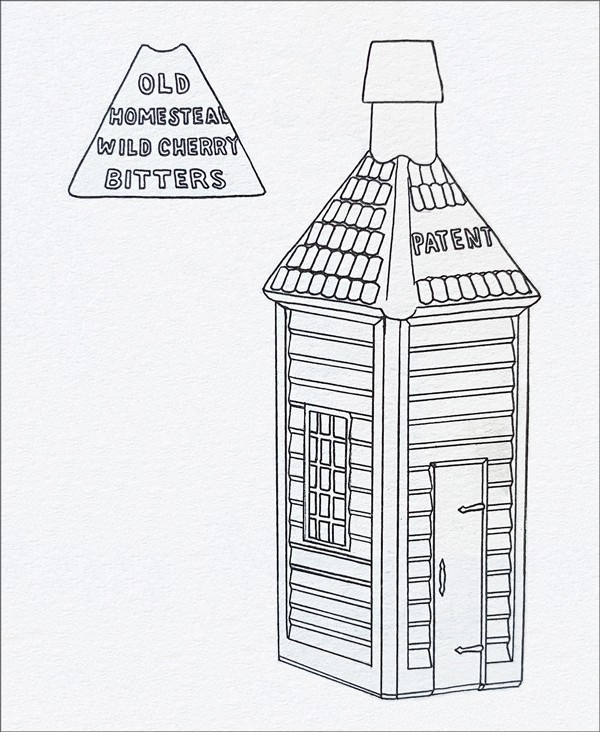
O 37 // s // OLD / HOMESTEAD / WILD CHERRY / BITTERS / motif of shingles // PATENT // sp // motif shingles //
L … Old Homestead Wild Cherry Bitters, Sold by T. B. Slingerland & Co., No. 69 Beekman St., N. Y.
9 7/8 x 2 7/8 x (5 7/8) 3/16
Square cabin, LTC, Applied mouth; Amber, Common; Yellow, Lime, Puce and Olive yellow, Rare; Cobalt blue, Extremely rare; Green and Amber with inside screw and glass stopper – Extremely rare
There are a number of variants of this 15-pane window bottle when looking at the window, roof shingles and with the door ending above the base and the door going to the bottom of the bottle. These second door examples seem to be taller bottles.
The cobalt blue example and the emerald green with screw top example are considered among the top bitters bottles. They are unique.
Support: Reference to Bitters Bottles by Carlyn Ring and W. C. Ham. Use of Old Homestead Wild Cherry Bitters illustration courtesy Bill Ham.
Support Images: Examples from the Jeff Burkhardt, Ferdinand Meyer V and Sandor P. Fuss Collections.
Support: Reference to Log Cabin Series – Old Homestead Wild Cherry Bitters
Join the FOHBC: The Virtual Museum is a project of the Federation of Historical Bottle Collectors (FOHBC). To become a member.

